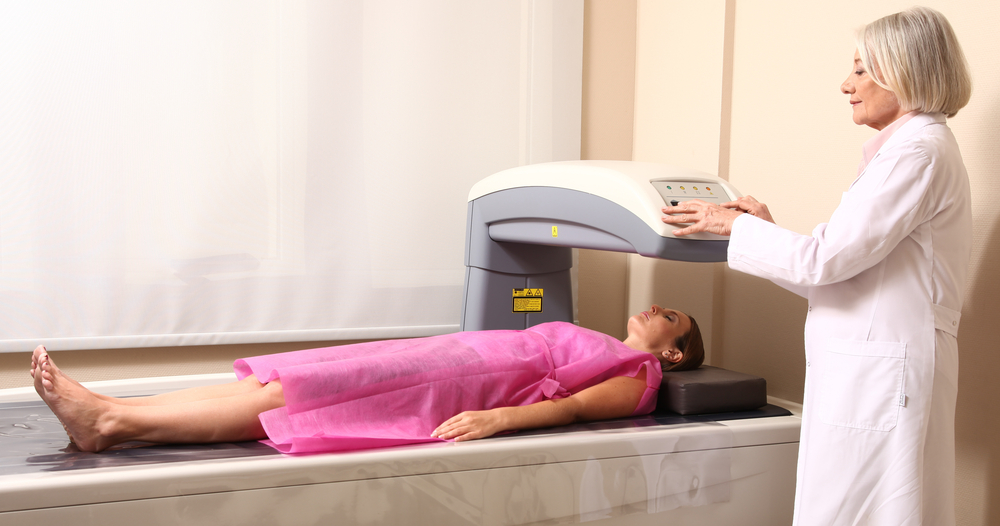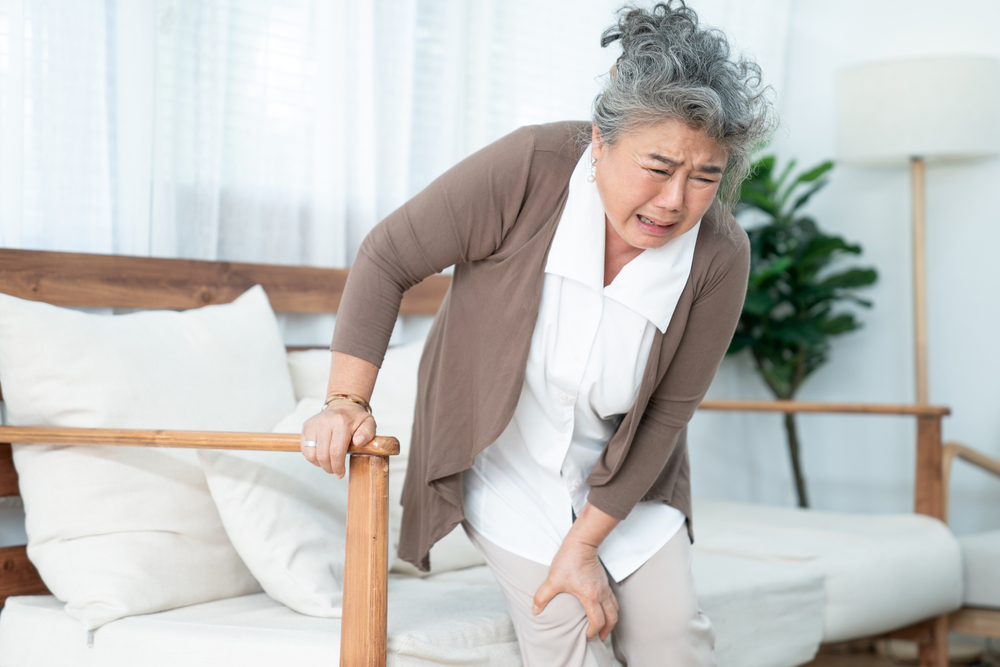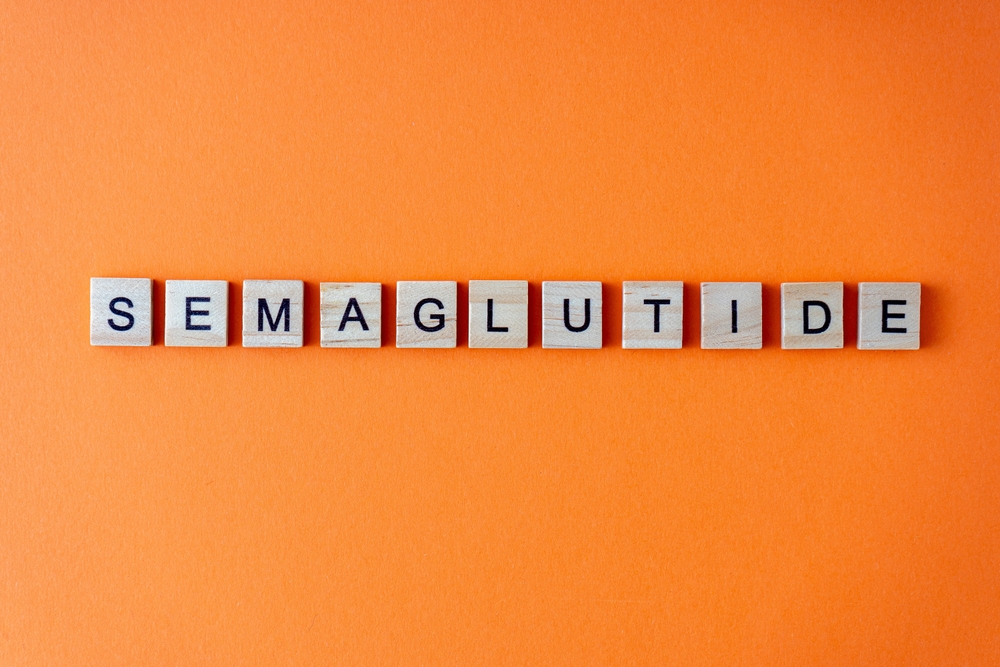Let's talk about something that doesn't get enough attention. Your bones.
When we think about menopause, we often focus on the obvious symptoms such as hot flashes, mood swings, and trouble sleeping. But there's another big change happening behind the scenes: bone loss. During menopause, your body produces less estrogen, a hormone that helps keep your bones strong. Without enough of it, bone density starts to decrease, making fractures and osteoporosis a real concern.
The good news? You don't have to just sit back and let it happen.
In this article, we'll break down why menopause bone loss happens, how to know if you're at risk, and what you can do to keep your bones healthy.

Menopause And Bone Health: Here's What You Need To Know
Your bones might not be something you think about every day, but they're constantly changing. In fact, your body is always breaking down old bone and building new bone to keep your skeleton strong and healthy. But when menopause hits, this balance shifts, and not in your favor.
Estrogen And Bone Loss
Estrogen is mainly associated with reproductive health, but it also plays a key role in maintaining bone density.
Throughout your life, estrogen helps regulate the bone remodeling process by ensuring that new bone is formed at the same rate that old bone is broken down. It also helps keep calcium in your bones so that they are strong and resistant to fractures.
Once menopause begins and estrogen levels drop, the body starts losing bone faster than it can replace it. This process, called bone resorption, means that bones become thinner, weaker, and more prone to fractures. The spine, hips, and wrists are especially vulnerable, which is why postmenopausal women have a much higher risk of osteoporosis, a condition where bones become so brittle that even a minor fall or bump can cause a break.
Menopause Bone Loss Versus Normal Aging Bone Loss
It's normal for everyone to experience some bone loss as they get older, but menopause accelerates this process dramatically.
In a typical aging process, bone density gradually declines over decades. But during menopause, bone loss happens at a much faster rate, particularly in the first few years. This is why early intervention, whether through diet, exercise, or medical treatments is so important.
How Fast Does Bone Loss Happen?
The most rapid bone loss happens within the first 5 to 7 years after menopause. During this time, women can lose up to 20% of their bone density. That's a significant amount that can set the stage for osteoporosis and fractures later in life.
- On average, postmenopausal women lose 1-2% of their bone density per year.
- Those with risk factors like smoking, poor diet, or lack of exercise may lose even more.
- By the time a woman reaches her 70s, she may have lost 30-50% of her peak bone mass.
The Role Of Genetics, Lifestyle, And Health Conditions In Menopause Bone Loss
While estrogen loss is the main driver of menopause-related bone loss, other factors can make things worse:
- Genetics: If your mother or grandmother had osteoporosis, you're more likely to develop it, too.
- Lifestyle Choices: Smoking, excessive alcohol consumption, and a sedentary lifestyle speed up bone loss.
- Dietary Habits: Not getting enough calcium, vitamin D, or protein can weaken bones further.
- Medical Conditions: Thyroid disorders, rheumatoid arthritis, and long-term use of certain medications (like steroids) can contribute to bone loss.
The good news? While you can't control aging or genetics, you can take action to protect your bones. In the next sections, we'll explore the best ways to keep your bones strong and reduce your risk of fractures as you navigate menopause and beyond.
Signs And Risks Of Menopause-Related Bone Loss
Menopause bone loss is often called a "silent condition" because you don't actually feel your bones getting weaker until something happens, of course. That's why it's so important to recognize the signs and understand your risk factors before a fracture occurs.
How to Know If Your Bones Are Weakening
Since bones don't have nerve endings like muscles do, you won't feel pain as they lose density. Instead, there are subtle signs to watch for:
1. Silent Symptoms: No Pain Until a Fracture Happens
Unfortunately for most women, the first real indicator of bone loss is a fracture. It's not uncommon to trip, fall, and suddenly end up with a broken wrist, hip, or vertebra which are all injuries that can take months to heal and significantly impact mobility.
2. Changes In Posture Or Height
Are you noticing that your back feels more hunched than it used to? Do you seem a little shorter than you were a few years ago?
These are warning signs of osteoporosis-related fractures in the spine. As bones weaken, tiny fractures (called compression fractures) can occur in the vertebrae and cause a noticeable curve in the upper back (called a dowager's hump) or a gradual loss of height.
3. Increased Risk Of Fractures From Minor Falls Or Injuries
If a simple slip, a sneeze, or even bending down to pick something up results in a fracture, it's a major red flag. Healthy bones should be able to withstand small impacts, so when they don't, it's a sign that they've become fragile.
Who's At Higher Risk?
Some women are naturally more prone to menopause bone loss than others. If any of the following risk factors apply to you, it's especially important to take preventive steps now.
1. Family History Of Osteoporosis
Genetics play a big role in bone health. If your mother, grandmother, or older relatives have a history of osteoporosis or fractures, you may be at higher risk.
2. Being Underweight Or Having A Small Frame
Bone mass is partially determined by body size. Women with a naturally thin or petite frame have less bone to begin with, making any loss more significant. Additionally, low body fat can mean lower estrogen levels, which accelerates bone breakdown.
3. Smoking, Excessive Alcohol Consumption, And Poor Diet
Nicotine interferes with the body's ability to absorb calcium and slows new bone formation, while excessive drinking reduces bone density and increases fall risk. Lastly, not getting enough calcium, vitamin D, or protein deprives your bones of the nutrients they need to stay strong.
4. Lack Of Weight-Bearing Exercise
Your bones respond to impact. Walking, strength training, and even dancing help maintain bone density, while a sedentary lifestyle speeds up bone loss. If you spend most of your day sitting and don't engage in regular exercise, then your bones aren't getting the stimulation they need.
5. Certain Medications (Steroids, Thyroid Meds, etc.)
Long-term use of certain medications can weaken bones over time, including:
- Corticosteroids (such as prednisone) are often used for asthma or autoimmune conditions.
- Thyroid medications, if the dose is too high.
- Some anti-seizure drugs and proton pump inhibitors (for acid reflux) can interfere with calcium absorption.

Testing And Diagnosis
Since menopause bone loss happens silently, the best way to know what's going on inside your body is through testing. A bone density test, also known as a DEXA scan (Dual-Energy X-ray Absorptiometry), is the gold standard for diagnosing bone loss and osteoporosis.
This quick, painless scan measures the mineral content of your bones, typically focusing on areas most vulnerable to fractures, like the hips and spine. It helps determine whether you have normal bone density, low bone mass (osteopenia), or full-blown osteoporosis. Early detection is key because if bone loss is caught early, steps can be taken to slow or even prevent further weakening.
Recommended Screening Age And Frequency
Women over 65 should get a DEXA scan regularly, as recommended by their doctor. Postmenopausal women under 65 with risk factors (family history, low body weight, smoking, certain medications, etc.) should get tested earlier. If you have already been diagnosed with osteopenia or osteoporosis, follow-up scans may be recommended every 1-2 years to track changes in bone density and monitor treatment effectiveness.
Understanding Your Test Results: What T-Scores Mean
After your DEXA scan, you'll receive a T-score, which compares your bone density to that of a healthy young adult. Here's what the numbers mean:
- Normal Bone Density: T-score of -1.0 or higher
- Osteopenia (low bone mass): T-score between -1.0 and -2.5
- Osteoporosis: T-score of -2.5 or lower
The more negative the number, the weaker your bones are. A score in the osteopenia range doesn't mean you'll definitely develop osteoporosis, but it does mean you should take proactive steps to protect your bone health.
If your results indicate bone loss, your doctor may recommend lifestyle changes, supplements, or medications to help strengthen your bones. Catching bone loss early gives you the best chance to slow its progression and maintain mobility and strength as you age.
How To Prevent And Manage Menopause Bone Loss
The key to managing menopause bone loss is a combination of good nutrition, regular exercise, and healthy habits. Let's break down exactly what you can do to keep your bones strong and resilient.
Diet And Nutrition: What To Eat For Stronger Bones
What you eat plays a huge role in bone health. Your bones are living tissue, constantly being broken down and rebuilt, and they need the right nutrients to stay strong.
1. Calcium
Calcium is the building block of bones, but many women don't get enough, especially after menopause. Women under 50 need 1,000 mg of calcium per day, while women over 50 need 1,200 mg per day.
Some of the best sources of calcium include dairy, leafy greens (kale, bok choy, collard greens), almonds and chia seeds, canned fish with bones (especially salmon and sardines), and tofu and fortified plant-based milk. If you don't get enough calcium from food, your body pulls it from your bones so make sure you're meeting your daily needs.
2. Vitamin D
Calcium doesn't work without vitamin D, which helps your body absorb and use calcium properly. Many adults, especially those who spend little time in the sun, are deficient.
Women under 70 need 600 IU of vitamin D per day, while women over 70 should have 800 IU per day. Good sources of vitamin D include sunlight (even just 15-20 minutes of sun exposure a few times a week can help), fatty fish, fortified dairy and plant milk, and egg yolks. If you're low on vitamin D, a supplement might be necessary—check with your healthcare provider.
3. Magnesium, Vitamin K, And Protein
- Magnesium: Helps convert vitamin D into its active form. Found in nuts, seeds, whole grains, and dark chocolate.
- Vitamin K: Supports bone formation and reduces fracture risk. Found in leafy greens, broccoli, and fermented foods.
- Protein: Essential for bone structure. Get enough from lean meats, fish, eggs, beans, and dairy.
Foods To Limit That Weaken Bones
Certain foods can reduce bone density if consumed in excess. These include:
- Too Much Salt: Causes calcium loss through urine. Avoid processed foods.
- Caffeine And Soda: Can interfere with calcium absorption. Stick to 1-2 cups of coffee per day.
- Excessive Alcohol: Weakens bones over time. Keep it moderate.
Exercise
Weight-bearing and resistance exercises signal your body to build more bone. This is because bones respond to stress by becoming stronger. Therefore, the best exercises are those that make your muscles pull on your bones, which stimulates new bone growth.
Best Types Of Exercise For Bone Health
- Weight-Bearing Cardio: Walking, hiking, dancing, and jogging help strengthen bones.
- Strength Training: Lifting weights, resistance bands, and bodyweight exercises build muscle and bone mass.
- Yoga And Pilates: Improve balance and flexibility, which reduces fall risk.
- Balance Exercises: Standing on one leg, heel-to-toe walking, and tai chi help prevent fractures from falls.
Simple Workout Routine To Incorporate Into Daily Life
- 3-4 days a week: 30 minutes of brisk walking or dancing.
- 2-3 days a week: Strength training (using dumbbells, resistance bands, or bodyweight exercises like squats and lunges).
- Daily: Balance exercises and stretching.
Even small changes like taking the stairs instead of the elevator can help.
Lifestyle Changes That Make A Difference
Beyond diet and exercise, a few simple lifestyle changes can go a long way in protecting your bones.
1. Quit Smoking And Limit Alcohol Intake
Smoking reduces estrogen levels and speeds up bone loss. In fact, some medical studies refer to smoking as, “The standalone risk factor for osteoporosis in women in postmenopausal age.†Fortunately, quitting can slow down this process. Meanwhile, excessive alcohol interferes with calcium absorption and increases fall risk. Stick to one drink per day or less.
2. Get Enough Sleep
Poor sleep can lead to higher levels of cortisol, a stress hormone that weakens bones over time. Aim for 7-9 hours of quality sleep each night to support bone repair and hormone balance.
3. Managing Stress
Chronic stress increases inflammation, which can accelerate bone loss. Try:
- Meditation or deep breathing exercises
- Spending time in nature
- Engaging in hobbies that relax you
Medical Treatments And Supplements
Calcium and vitamin D are essential for bone health, but not everyone needs supplements.
Most people can get enough calcium through a balanced diet that includes dairy, leafy greens, and fortified foods. Similarly, vitamin D is produced in the skin when exposed to sunlight and can be found in foods like fatty fish and fortified dairy products.
Who Needs Supplements?
- People with dietary restrictions or low calcium intake.
- Those with limited sun exposure or difficulty absorbing vitamin D.
- Postmenopausal women, who have an increased risk of bone loss.
Final Thoughts
Menopause-related bone loss is a serious but manageable health concern.
While declining estrogen levels accelerate bone loss, proactive steps like maintaining a nutrient-rich diet, engaging in weight-bearing exercise, and avoiding harmful lifestyle habits can help protect your bone health. Regular screenings, such as DEXA scans, allow for early detection and intervention, reducing the risk of fractures and osteoporosis.
Prioritize your bone health now so that you can stay strong, active, and independent for years to come! And if you need a little help managing bone loss and other menopause-related health concerns, check out Fem Excel's treatment options.





